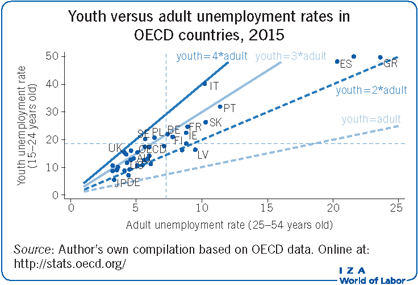Elevator pitch
In Germany, young people are no worse off than adults in the labor market, while in southern and eastern European countries, they fare three to four times worse. In Anglo-Saxon countries, both youth and adults fare better than elsewhere, but their unemployment rates fluctuate more over the business cycle. The arrangements developed in each country to help young people gain work experience explain the striking differences in their outcomes. A better understanding of what drives these differences in labor market performance of young workers is essential for policies to be effective.

Key findings
Pros
Countries differ dramatically in their ability to generate the work-related competences young people need to succeed in the labor market.
Central European, Anglo-Saxon, and several Asian countries perform better with respect to many youth outcomes.
Recent reforms are reducing cross-country institutional differences; the worst performing countries are learning from the best.
Education systems that integrate more with the labor market, through apprenticeship, job placement services, or direct hiring by firms, seem to setup their youth for success in the labor market.
Cons
In most countries, the ratio of youth to adult unemployment is between two and three; in eastern and southern Europe, young people fare even worse.
Southern and eastern European countries were the hardest hit by the global financial crisis, with youth suffering most.
Temporary work does not solve the youth disadvantage; it helps only the most skilled workers and those in need of general, not job-specific skills.